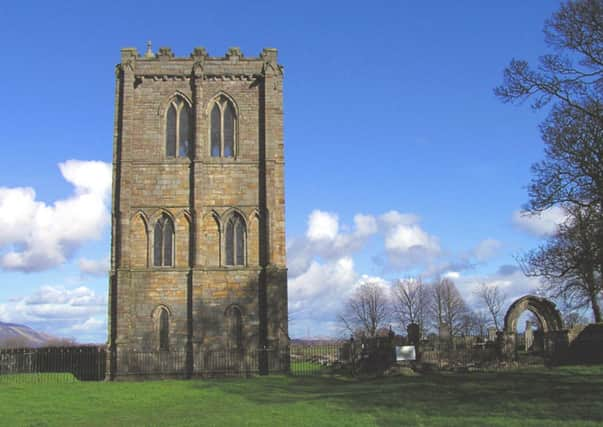700-year-old coin found during Bannockburn dig


The silver penny was discovered yards from Cambuskenneth Abbey, near Stirling, by archaeologists looking for artefacts from the time of the 1314 battle.
The small coin, minted in London during the late 13th or early 14th century, may have been a month’s wages for a soldier in Edward II’s defeated army.
Advertisement
Hide AdExperts from GUARD Archaeology, who led a metal detector survey of the area, believe it may have been among the spoils of battle taken back to the abbey by the Bruce from the battlefield.
Warren Bailie, GUARD’s battlefield archaeologist, who led the search, said today: “This coin would have been in circulation in 1314 and could relate to the Battle of Bannockburn.
“Cambuskenneth Abbey was where the Scots’ baggage train was held before the battle and where they returned to immediately afterwards.
“It was where the booty was taken from the battlefield, so it could potentially have been dropped booty.
“It was worth quite a lot of money at that time -- perhaps a soldier’s wage for that month.”
Cambuskenneth Abbey is one of the few places specifically mentioned in near contemporary accounts of the Battle of Bannockburn.
Advertisement
Hide AdRobert the Bruce kept his army’s baggage there prior to the battle, and it was the location for a series of parliaments during his rule.
The first, in November 1314, just a few months after the historic victory, saw Robert disinherit all the nobles holding lands in Scotland who were not present; including the sons of those who had died fighting for Edward II at Bannockburn.
The worn coin was found in topsoil just 3cm down.
Advertisement
Hide AdIt will now undergo analysis to help determine its exact origin.
It is likely to be declared as Treasure Trove, and given a home in a museum.
Mr Bailie said that whichever king appears on the coin, it was likely to have been around at the time of the battle.
“Edward I coins would still have been in circulation in 1314, while Edward II was the king who led his army in to battle at Bannockburn, so it is the right period.
“It needs to be conserved and thoroughly cleaned. It will then be looked at microscopically as coins from the reigns of Edward I and Edward II look very similar -- the hairstyles are quite similar.”
The metal-detecting survey was one of a number of projects carried out in the area in the hope of discovering items relating to the Battle of Bannockburn ahead of its 700th anniversary this year.
Advertisement
Hide AdIt covered 17 hectares across fields to the south and west of Cambuskenneth Abbey.
A total of 1044 finds were recorded including some 36 coins. In addition to the silver Edward coin, another was provisionally identified as a silver Henry III coin (1251-1272) that might also have been in circulation at the time of Bannockburn.
Advertisement
Hide AdOther significant finds included unrelated belt buckles, buttons, medieval pottery and musket balls dating to the 17th century.
Mr Bailie, who could return to the site for further surveys later this year, said: “The Edward coin was the star find, because it was exactly what we were looking for.
“It gives us hope that there are other finds yet to be discovered.”
Cambuskenneth Abbey was founded by David I around 1140, and was originally known as the Abbey of St Mary of Stirling.
From at least 1201 onwards it was referred to as the Abbey of St Mary of Cambuskenneth. The place name means the ‘creek’ or ‘field of Kenneth’, and is traditionally associated with a battle between the Scots under Kenneth and the Picts -- underpinning its position at the heart of Scottish identity.
GUARD Archaeology collaborated with the Centre for Battlefield Archaeology Glasgow University (CBAGU) and local volunteers in investigating the abbey.
Advertisement
Hide AdThe project brought together archaeologists, historians, metal detectorists, geophysicists and even a local poet, Elizabeth Rimmer, with members of the local community to reveal evidence from the Scottish Wars of Independence and later periods of conflict in and around the abbey and its environs.